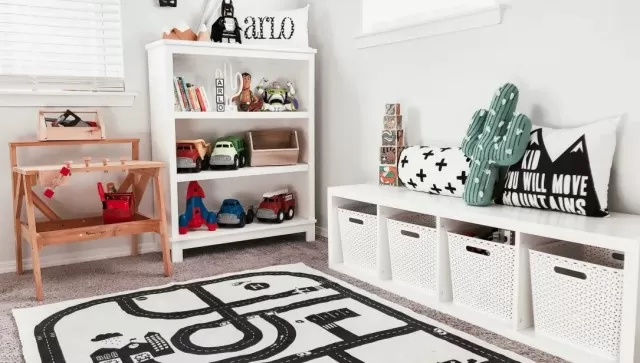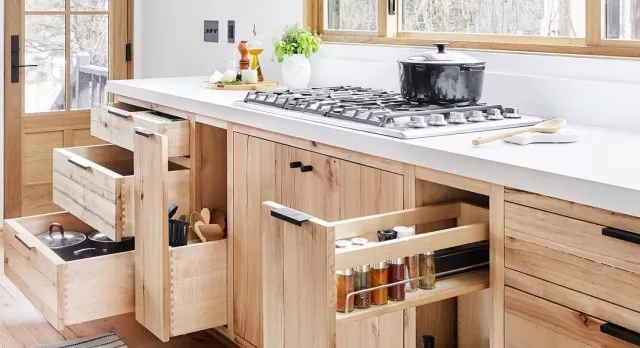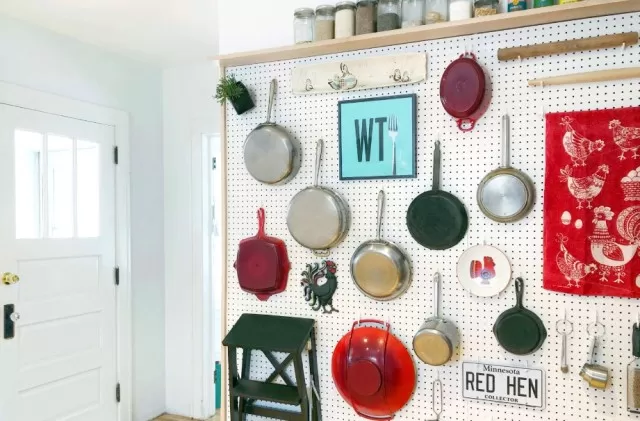Improving your storage techniques and achieving optimal organization may initially appear straightforward.
Improving your storage techniques and achieving optimal organization may initially appear straightforward, but several common mistakes can hinder your progress.
Fortunately, these mistakes can be easily rectified. Here are some simple steps to enhance your storage strategies and achieve efficient organization.
Storage Mistakes & How to Fix Them

Overstuffing Shelves: When it comes to organizing shelves, it’s important to avoid the temptation of cramming every available inch with items.
Not only does this lead to a loss of track and create visual clutter, but it also makes it difficult to find specific things when needed. Instead, try a balanced approach by alternating vertical and horizontal elements.
If one section of the shelf contains several books or containers, give the other side some breathing space by adding a photo or a collectible. Additionally, consider incorporating mobile storage solutions such as a versatile bar cart.
A bar cart can serve as extra serving space during gatherings and can be easily moved out of the way when not in use.
Using the Wrong Container: Storage containers such as baskets, caddies, boxes, and canisters offer versatile storage options.
However, it’s crucial to use the right container for each specific purpose. By being strategic about container selection, you can optimize your storage space.
Learn how to choose the appropriate type of container for different items to ensure efficient organization.
Relying on One Type or Size of Storage: Just as your belongings come in various sizes, your storage containers should reflect this diversity.
Avoid using a one-size-fits-all approach and embrace a mix of different container sizes and types. Consider using open mesh baskets, fabric bins, glass jars, and wicker baskets to accommodate a wide range of items.
This approach allows you to maximize space utilization and find visually pleasing solutions for items with unconventional shapes.
Ignoring Narrow Spaces: Even small rooms can offer significant storage potential if you employ strategic organizing techniques.
When dealing with tight spaces, opt for furniture pieces that are designed to work efficiently without occupying excessive room. For example, a narrow side table with an open shelf and a lower drawer can provide a surface for decorative accents or drinks while offering hidden storage and space for books.
Explore the possibilities of utilizing narrow spaces effectively.
Making Storage Too Deep: While deep cabinets and wide shelves can be suitable in certain areas, they may not always be the most effective option, particularly in smaller spaces.
Consider using narrower storage solutions instead. This approach offers a dual advantage: it allows you to utilize spaces that would otherwise be too small while reducing the likelihood of clutter and disorganization caused by an excess of items.

Passing by Overhead Spaces: When seeking additional storage space, remember to look up.
The area above eye level presents ample potential for storage in various rooms, including closets, kitchens, bathrooms, and bedrooms. Make use of the overhead spaces for both storage and display purposes.
Arrange items you use less frequently closer to the ceiling, optimizing the available square footage.
Not Tending to Visual Clutter: Visual clutter can disrupt the overall organization and aesthetics of a space, even if the storage is functional.
Common culprits include electronic devices with their associated cords, leading to tangled cables and the disarray of items. Combat visual storage problems by utilizing vertical containers in appealing patterns or colors.
When storage is visually pleasing, you are more likely to maintain and tend to it regularly.
Insisting on Closed Doors: Storage doesn’t always have to be concealed to be useful.
open shelves, racks, and doorless cabinets offer practical alternatives that promote accessibility and allow you to display your favorite items. When deciding what to store openly, prioritize items that you frequently use, such as your go-to purse or a jacket worn multiple times a week.
Embrace the concept of visible storage to strike a balance between accessibility and aesthetics.
Discouraging Accessibility: If storage items are out of reach for family members, it can lead to constant requests for assistance and a lack of ability to put things back in their designated places.
Solve this issue by incorporating storage solutions that are easily accessible for everyone in the household, including young children. Utilize low shelves or cubbies for storing books and toys, keep clothes within arm’s reach, and stock cabinets at easily reachable heights with items used daily.

Not Rotating Items with Use or Season: Overstuffed closets can be resolved by implementing a rotation system.
Take out items that are not currently in season, such as coats and shoes, and utilize under-bed space or upper shelves to store them until needed again. This frees up drawers and racks for items that are currently in use or will be needed shortly.
Cluttering Up Your Drawers: Drawers often become the default destination for various miscellaneous items that lack a specific place.
Prevent drawers from becoming clutter magnets by using small trays, bowls, dividers, or other containers to corral loose items. Take the opportunity to declutter and only keep the items you need, assigning a designated spot for each type of item within the drawer.
Not Subdividing Storage: Closets and cabinets can quickly become chaotic and overwhelming without an effective organizing system.
To restore order, invest in bins, baskets, and boxes of various sizes. Use these containers to divide items by color or type, creating individual compartments for better organization.
Adding labels to each container further reinforces the organization and ensures easy retrieval of stored items.
Choosing Single-Purpose Furniture: When selecting furniture for your space, opt for pieces that offer multiple ways of organizing and storing items.
Nightstands and side tables with a variety of storage options, such as Hidden Compartments, open shelves, and tabletop surfaces, provide an all-in-one solution. By combining different storage features, you can maximize the available space and create a more organized environment.
*The information is for reference only.